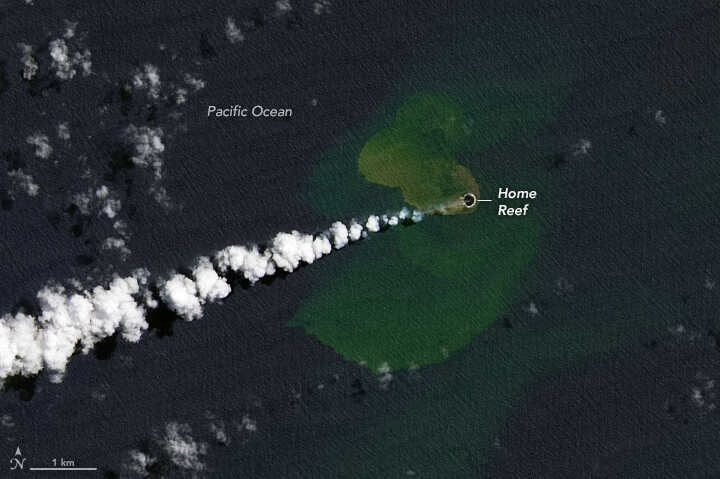No, this isn’t sci-fi. It really happened.
In a stunning natural event, a brand-new island emerged from the ocean near the Pacific’s Ring of Fire—almost overnight. Satellite images confirmed it, scientists validated it, and now the world is watching in awe.
A volcanic eruption triggered a rapid transformation beneath the waves, and what was once open ocean is now solid land.
🌋 How Does an Island Just “Appear”?
The island was born from submarine volcanic activity—eruptions occurring below the ocean surface. When pressure builds in undersea volcanoes, molten rock (magma) shoots upward. If enough material piles up above sea level, a new landmass forms.
That’s exactly what happened just off the coast of Tonga, where volcanic activity near Home Reef led to the formation of a small island in a matter of hours.
And it’s not the first time.
🗺️ History Repeats Itself
This isn’t a one-time wonder. In fact, the Pacific Ocean has witnessed multiple “ephemeral islands” over the past century:
- Surtsey, Iceland (1963): Formed by a volcanic eruption and still exists today.
- Nishinoshima, Japan (2013): Grew massively due to continued eruptions.
- Hunga Tonga-Hunga Ha’apai (2009–2022): Merged into a larger island after a volcanic blast.
Some of these islands eroded within months, while others grew and became home to new ecosystems, birds, and plant life.
🔍 Caught on Satellite—In Real Time
NASA and NOAA satellites captured before-and-after imagery that shows the island’s sudden emergence. The images sparked viral reactions, especially because:
- The land didn’t exist just 24 hours earlier.
- You can now see waves crashing against its shores.
- It may already be growing due to continuing eruptions.
This wasn’t just scientific data—it was a real-time Earth event, unfolding before our eyes.
🌱 Life Finds a Way
The most fascinating part? Within weeks, life often begins colonizing these new islands.
Birds bring seeds, algae forms, and insects hitch rides via wind and waves.
In some cases, these islands become mini ecological labs, offering a rare glimpse into how life begins from scratch.
It’s like watching evolution on fast-forward.
🧪 Why It Matters More Than Ever
In a world grappling with rising sea levels, the appearance of new land is ironic—but important.
Scientists study these islands to:
- Understand volcanic behavior and seismic risks
- Observe how ecosystems evolve
- Model future geological and environmental changes
These events also remind us how dynamic Earth really is.
Land isn’t fixed—it’s always being made, moved, or lost.
😲 Could We Live On It?
Not so fast.
Most of these islands are made of loose volcanic rock and ash, highly unstable and prone to erosion. Building infrastructure would be risky—and in many cases, the islands disappear within months.
But some countries do lay claim to such islands for exclusive economic zones (EEZs), especially if they last long enough to host structures or vegetation.
So yes, a tiny new island can spark territorial debates and geopolitical interest.
🧠 Final Thoughts
In an age of artificial intelligence and digital noise, nature still finds ways to surprise and humble us.
A new island, born from fire and water, reminds us that Earth is far from static.
New land rising from the ocean isn’t just a phenomenon—it’s a reminder that we still live on a restless, ever-changing planet.So next time you check Google Maps…
you might just find a landmass that wasn’t there yesterday.



